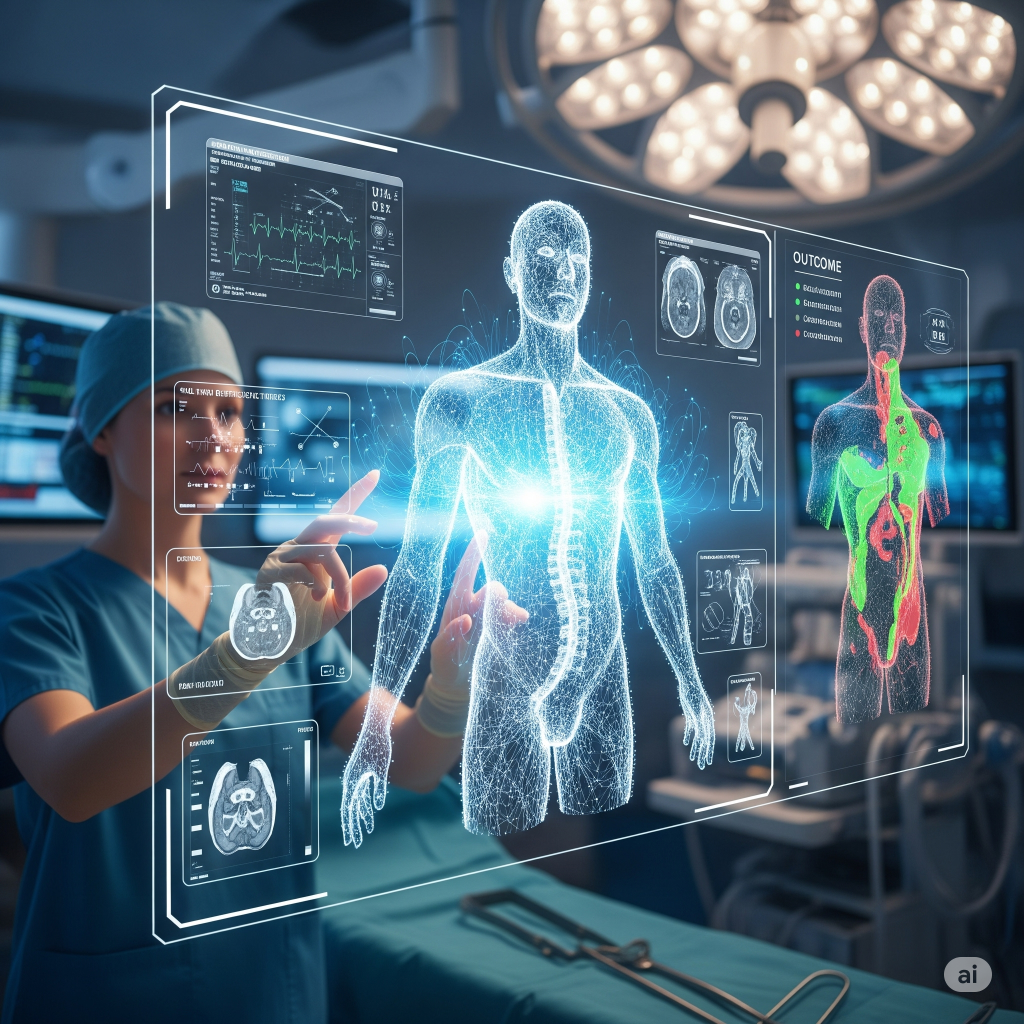India’s healthcare landscape is witnessing a significant technological shift as the medical community increasingly embraces the transformative potential of digital twin technology. Spearheading this innovation is the Sanjay Gandhi Postgraduate Institute of Medical Sciences (SGPGI) in Lucknow, where doctors are leveraging the power of AI-driven digital twin models to revolutionize surgical planning and treatment evaluation. This cutting-edge approach, which involves creating virtual replicas of patients based on real-time diagnostic data, allows medical professionals to simulate surgical outcomes in a risk-free digital environment, promising enhanced precision, reduced potential for errors, and significant benefits, particularly in resource-constrained settings.
Virtual Patients, Real-World Impact
At the heart of this technological advancement lies the concept of a digital twin – a dynamic virtual representation of a physical asset or process. In the medical field, this translates to creating a comprehensive digital avatar of a patient, incorporating a wealth of real-time diagnostic data such as medical history, imaging scans, and physiological parameters. Utilizing sophisticated AI algorithms, these digital twin models can then be used to simulate various treatment options, most notably surgical procedures.
The team at SGPGI, Lucknow, is at the forefront of this innovation, employing these AI-driven virtual replicas to meticulously plan and evaluate potential surgical interventions before stepping into the operating room. By simulating different surgical approaches and anticipating potential complications within the digital realm, doctors can gain invaluable insights, optimize their strategies, and ultimately enhance the likelihood of positive patient outcomes.

Precision and Safety in the Digital Sandbox
The benefits of utilizing digital twin technology in surgical planning are manifold:
- Enhanced Precision: By allowing surgeons to visualize and rehearse procedures on a patient-specific virtual model, digital twins enable a greater understanding of the individual’s unique anatomy and potential challenges. This leads to more precise surgical execution and potentially reduces the invasiveness of procedures.
- Risk Mitigation: The ability to simulate different surgical scenarios in a risk-free environment allows medical teams to identify and address potential complications proactively. This can significantly reduce the chances of errors during actual surgery, leading to improved patient safety.
- Personalized Treatment Strategies: Digital twins facilitate the evaluation of various treatment options tailored to the individual patient’s specific condition and anatomical characteristics. This personalized approach can lead to more effective and efficient treatment plans.
- Improved Communication and Collaboration: The visual nature of digital twin models can enhance communication and collaboration among different members of the medical team, facilitating a more coordinated and informed approach to patient care.
A Boon for Resource-Constrained Settings
The adoption of digital twin technology is particularly significant for resource-constrained healthcare systems like that of India. In settings where access to advanced training facilities and extensive pre-operative planning resources might be limited, digital twins offer a cost-effective and efficient way to enhance surgical expertise and improve patient outcomes. The ability to simulate complex procedures virtually can bridge the gap in experience and provide surgeons with a valuable tool for honing their skills and making critical decisions.
Furthermore, the insights gained from analyzing the data within digital twin models can potentially lead to the development of standardized best practices and more efficient resource allocation within healthcare institutions.
Looking Ahead: The Expanding Horizon of Digital Twins in Medicine
While the application of digital twins in surgical planning at SGPGI, Lucknow, marks an exciting step forward, the potential of this technology extends far beyond the operating room. Future applications could include:
- Drug Discovery and Development: Simulating the interaction of drugs with virtual patient models to predict efficacy and identify potential side effects.
- Chronic Disease Management: Creating digital twins of patients with chronic conditions to personalize treatment plans and monitor disease progression in real-time.
- Medical Device Design and Testing: Utilizing virtual models to design and test the performance and safety of new medical devices.
- Medical Education and Training: Providing medical students and residents with realistic and risk-free environments to learn and practice complex procedures.
The integration of AI-driven digital twin technology into India’s medical community, as exemplified by the pioneering work at SGPGI, Lucknow, signifies a bold step towards a future of more precise, safer, and personalized healthcare. As this technology continues to evolve and become more accessible, it holds the promise of transforming patient care and improving outcomes across the nation, particularly in settings where resources are limited but the need for high-quality healthcare remains paramount.

Leave a Reply